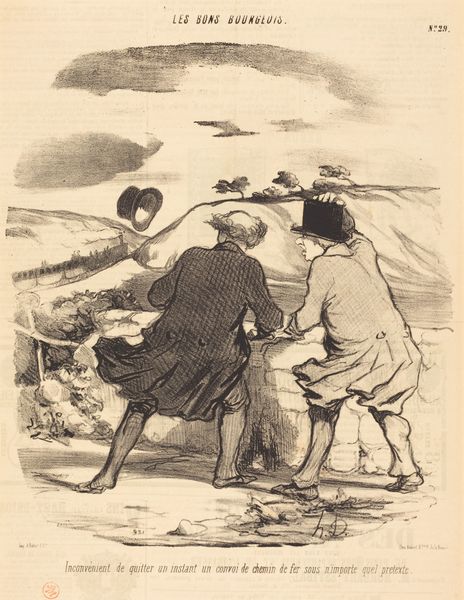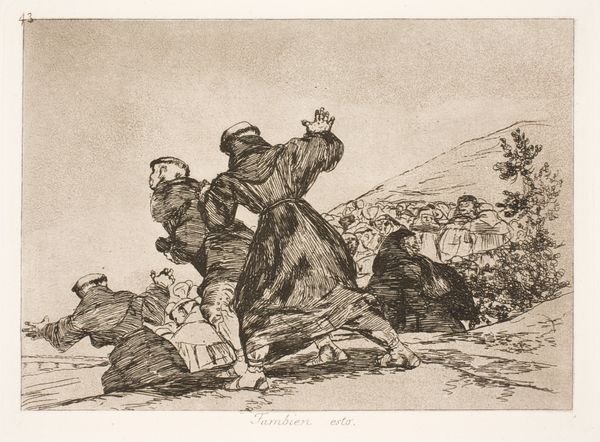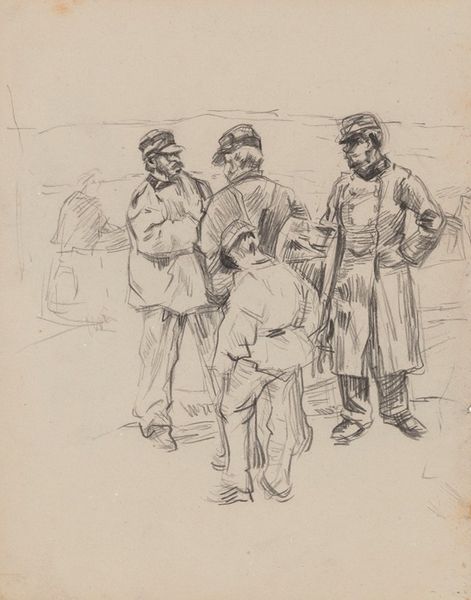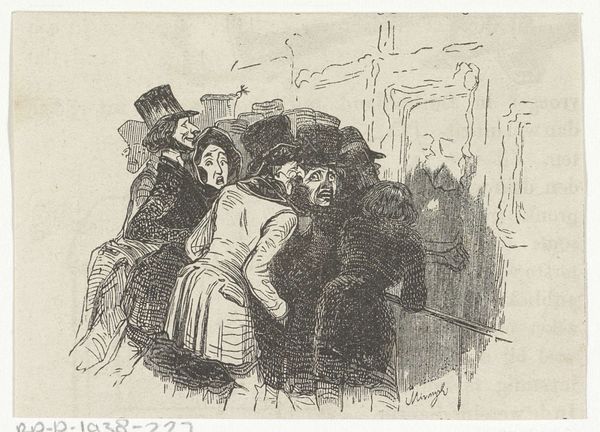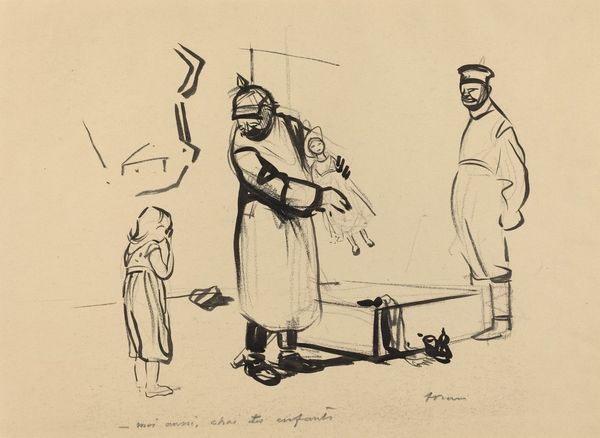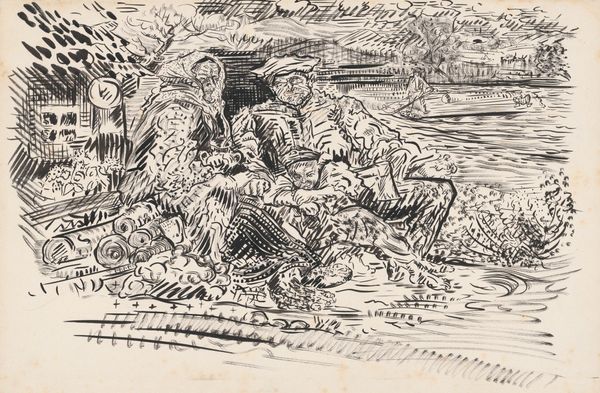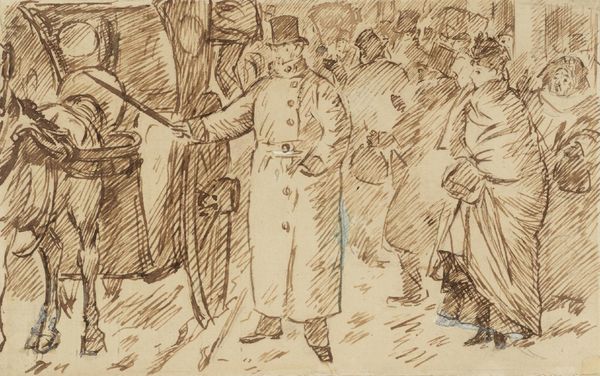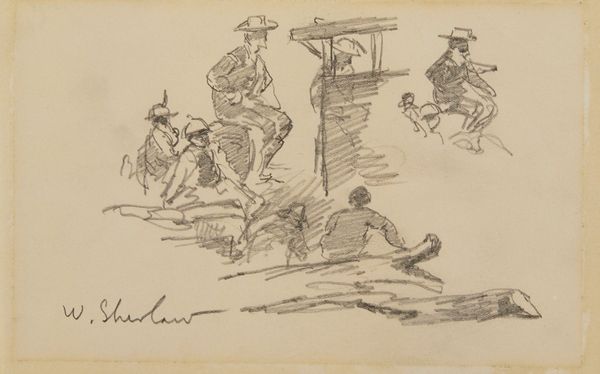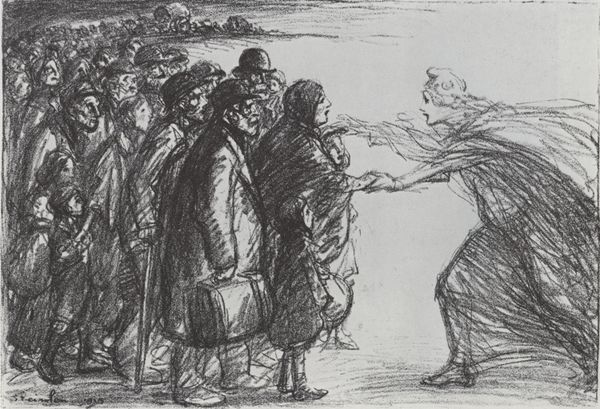
drawing, pencil, charcoal
#
drawing
#
narrative-art
#
war
#
landscape
#
german-expressionism
#
pencil
#
expressionism
#
watercolour illustration
#
charcoal
#
history-painting
#
realism
Copyright: Public Domain: Artvee
Curator: Here we have Jean-Louis Forain's "German Raid on a Village," created circa 1914-1919 using pencil and charcoal. It’s a powerfully raw image, isn’t it? Editor: Indeed. My initial impression is chaos and despair. The skewed perspective, the smoky greys, and frenzied lines evoke a sense of urgency. It’s deeply unsettling. Curator: Forain worked during a time of massive shifts in art production, where the idea of documenting became about communicating more honestly the weight of such historic, social upheaval. The very act of depicting war with such visceral imperfection speaks volumes. It is an Expressionist rendering, for sure, but based on observation. Editor: The looming figure of the German soldier—we see him from the back, faceless and imposing—clutching at the child certainly is iconic. In that moment, the child stands for the helpless and victimized, a symbol resonating through generations of conflict. This could be almost any conflict, anywhere, which speaks to the timelessness of the message. Curator: The composition drives our eye toward the burning village in the background, illustrating a deliberate narrative choice to connect the action directly with its devastating consequences, which I find powerful in such a simple and direct method. The artist made it very obvious, through the very basic materials they had, to connect production with impact. Editor: And the smoke itself curls upward like a dark omen, reinforcing this symbolism of destruction and loss of innocence. But even the smoke can be understood to represent larger notions of human tragedy. Curator: Perhaps a reference to industry, perhaps to lost innocence. To that end, seeing it now, Forain's work remains so important as a stark reminder of how materials and processes intersect with immense human cost. Editor: Agreed, by focusing on enduring visual language, this work helps us remember and mourn events. I noticed also the bare ground contrasted against the mass of fleeing figures, representing that vulnerable sense of loss that resonates even today. Curator: It is truly a piece that speaks across time. Editor: A heavy piece of history visualized through some clear and precise icons of despair and survival.
Comments
No comments
Be the first to comment and join the conversation on the ultimate creative platform.
